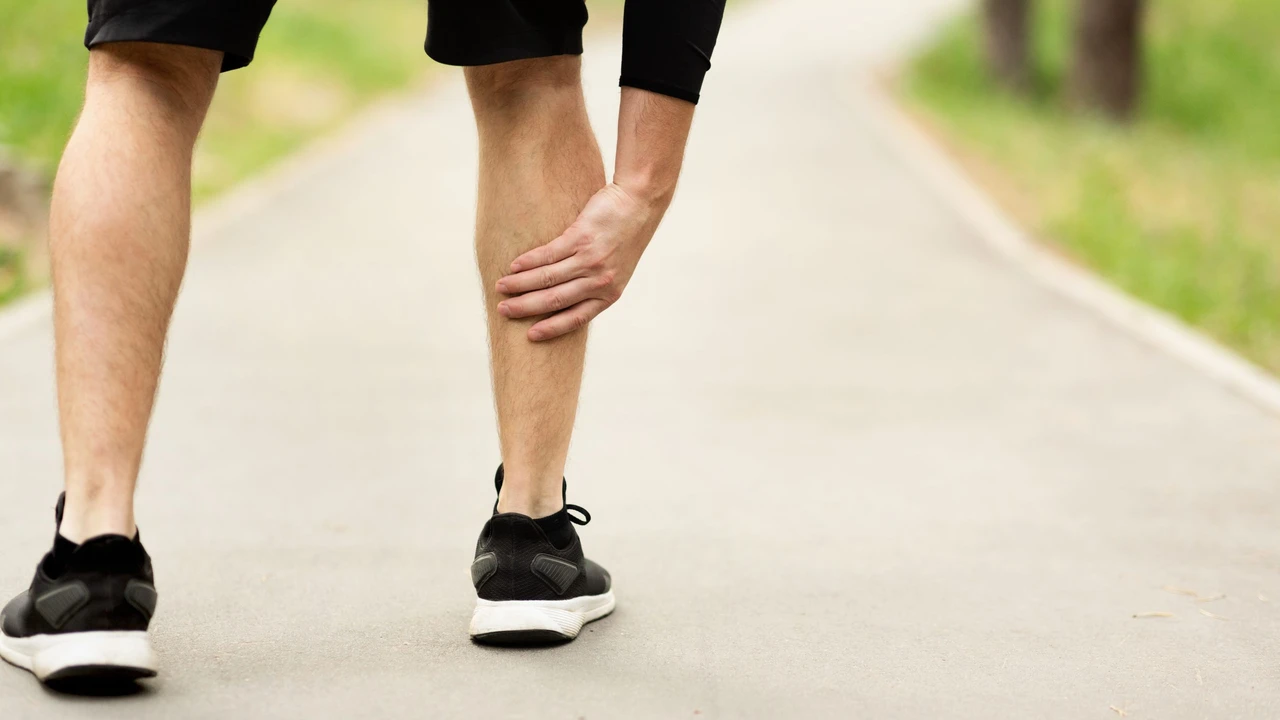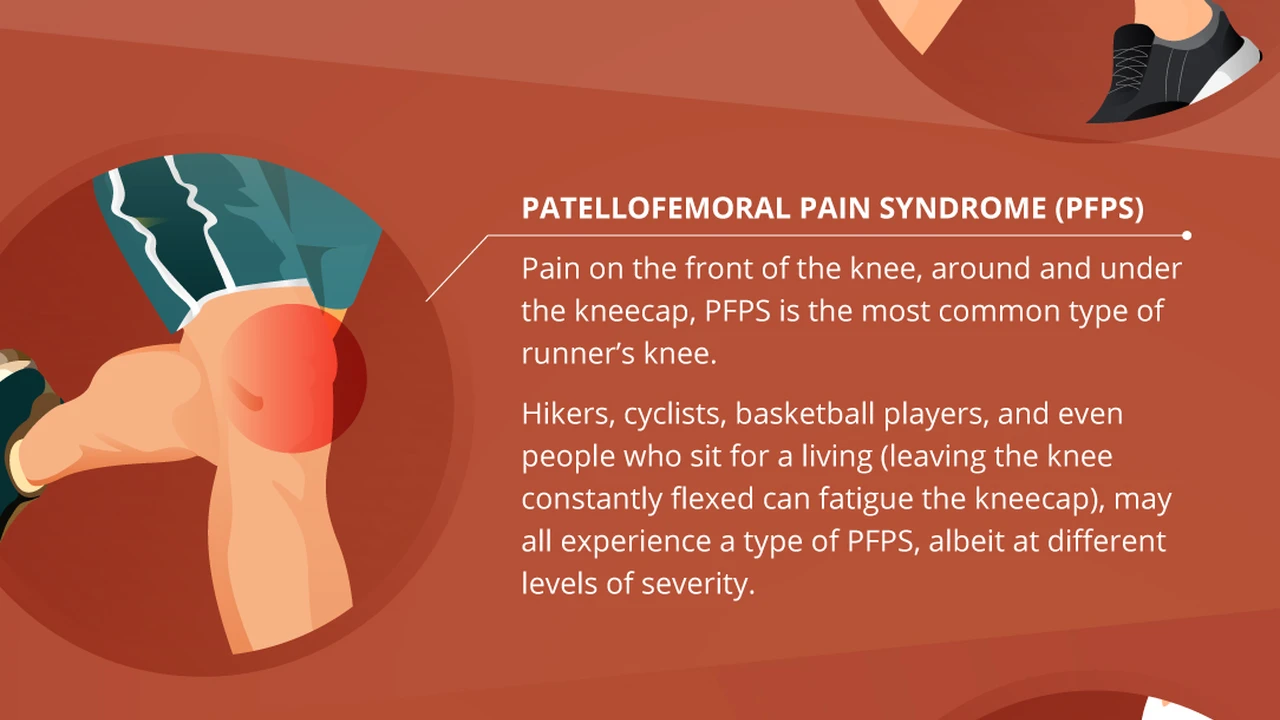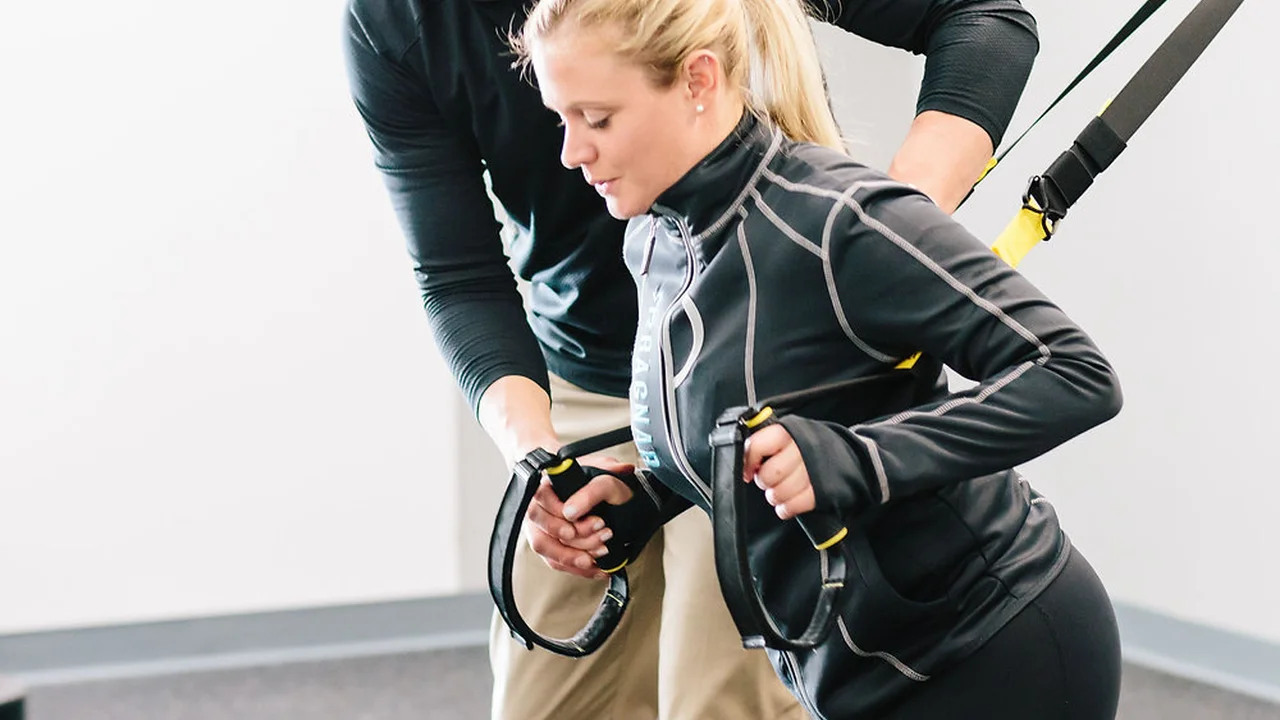When to See a Doctor for Jogging Pain

Understanding Common Injuries and Pain Points for Athletes
Athletes, whether professional or recreational, often push their bodies to the limit. This dedication can sometimes lead to injuries and pain. Understanding the common culprits is the first step in prevention and effective management. Let's delve into some prevalent issues:
Muscle Strains and Tears
Muscle strains occur when muscle fibers are stretched or torn, often due to overuse, improper warm-up, or sudden movements. Tears are more severe, involving a complete rupture of muscle fibers. Common areas affected include the hamstrings, quadriceps, and calves.
Symptoms: Sharp pain, swelling, bruising, limited range of motion.
Treatment: Rest, ice, compression, elevation (RICE), physical therapy, pain medication (NSAIDs).
Sprains
Sprains involve ligaments, the tissues that connect bones at a joint. Ankle sprains are particularly common, often resulting from twisting or rolling the ankle during activity.
Symptoms: Pain, swelling, bruising, instability in the joint.
Treatment: RICE, immobilization (brace or cast), physical therapy.
Tendonitis
Tendonitis is the inflammation of a tendon, the tissue that connects muscle to bone. Overuse and repetitive motions are common causes. Examples include Achilles tendonitis (affecting the Achilles tendon in the heel) and tennis elbow (affecting the tendons around the elbow).
Symptoms: Pain that worsens with activity, stiffness, tenderness.
Treatment: Rest, ice, physical therapy, bracing, cortisone injections (in some cases).
Stress Fractures
Stress fractures are tiny cracks in a bone, usually caused by repetitive stress and overuse. They are common in weight-bearing bones, such as the tibia (shinbone) and metatarsals (foot bones).
Symptoms: Pain that gradually worsens with activity, tenderness to the touch.
Treatment: Rest, immobilization (boot or cast), avoiding weight-bearing activities.
Shin Splints
Shin splints, or medial tibial stress syndrome, is pain along the shinbone (tibia). It's often caused by overuse, improper footwear, or running on hard surfaces.
Symptoms: Pain along the shinbone, tenderness to the touch.
Treatment: Rest, ice, stretching, supportive footwear, orthotics.
Plantar Fasciitis
Plantar fasciitis is inflammation of the plantar fascia, a thick band of tissue that runs along the bottom of the foot from the heel to the toes. It's often caused by overuse, improper footwear, or tight calf muscles.
Symptoms: Heel pain that is worse in the morning or after periods of rest.
Treatment: Stretching, ice, supportive footwear, orthotics, physical therapy.
Runner's Knee
Runner's knee, or patellofemoral pain syndrome, is pain around the kneecap. It's often caused by overuse, muscle imbalances, or improper alignment.
Symptoms: Pain around the kneecap that worsens with activity, clicking or grinding sensations in the knee.
Treatment: Rest, ice, stretching, strengthening exercises, orthotics.
Effective Pain Management Strategies for Injury Recovery
Managing pain effectively is crucial for a successful recovery and return to activity. Here are some proven strategies:
The RICE Protocol Rest Ice Compression Elevation
The RICE protocol is a cornerstone of acute injury management. It involves:
- Rest: Avoid activities that aggravate the pain.
- Ice: Apply ice packs to the injured area for 15-20 minutes at a time, several times a day.
- Compression: Use a compression bandage to reduce swelling.
- Elevation: Elevate the injured area above your heart to further reduce swelling.
Pain Medication Over The Counter Options
Over-the-counter pain relievers like ibuprofen (Advil, Motrin) and naproxen (Aleve) can help reduce pain and inflammation. Acetaminophen (Tylenol) can also help with pain relief but doesn't have anti-inflammatory properties. Always follow the recommended dosage instructions.
Physical Therapy and Rehabilitation Exercises
Physical therapy plays a vital role in restoring strength, flexibility, and function after an injury. A physical therapist can develop a personalized exercise program tailored to your specific needs and goals.
Stretching and Flexibility Training for Injury Prevention
Regular stretching and flexibility training can help prevent injuries by improving muscle elasticity and range of motion. Focus on stretching major muscle groups, such as the hamstrings, quadriceps, calves, and hip flexors.
The Importance of Proper Warm Up and Cool Down Routines
A proper warm-up prepares your muscles for activity, increasing blood flow and flexibility. A cool-down helps your body gradually return to its resting state, reducing muscle soreness and stiffness. Include dynamic stretches (e.g., arm circles, leg swings) in your warm-up and static stretches (holding a stretch for 30 seconds) in your cool-down.
Alternative Therapies Acupuncture Massage and More
Alternative therapies like acupuncture, massage, and chiropractic care can also be helpful in managing pain and promoting healing. Acupuncture involves inserting thin needles into specific points on the body to stimulate energy flow. Massage can help reduce muscle tension and improve circulation. Chiropractic care focuses on aligning the spine and joints to improve overall function.
Specific Product Recommendations for Injury Support and Pain Relief
Here are some product recommendations that can aid in injury support and pain relief, along with their use cases, product comparisons, and detailed information, including pricing:
Compression Sleeves For Muscle Support and Circulation
Product: Incrediwear Circulation Sleeve
Use Case: Provides targeted compression to muscles, improving circulation and reducing swelling. Ideal for use during and after exercise, or for individuals with muscle strains or sprains.
Product Comparison:
- Incrediwear vs. Copper Compression: Incrediwear uses a unique fabric infused with germanium and carbon, which is claimed to increase blood flow without relying solely on compression. Copper Compression uses copper-infused fabrics, which some believe have anti-inflammatory properties. Incrediwear tends to be more expensive but is favored for its breathability and comfort.
- Incrediwear vs. CEP Compression: CEP is known for its medical-grade compression, offering a tighter fit and more significant support. Incrediwear is generally preferred for everyday use and moderate activity.
Detailed Information:
- Pricing: Ranges from $30-$50 per sleeve, depending on the size and type (e.g., knee sleeve, calf sleeve, arm sleeve).
- Materials: Fabric infused with germanium and carbon.
- Benefits: Increased blood flow, reduced swelling, muscle support, improved recovery.
Foam Rollers For Muscle Recovery and Flexibility
Product: TriggerPoint GRID Foam Roller
Use Case: Used for self-myofascial release, helping to break up muscle knots, improve flexibility, and reduce muscle soreness. Suitable for use on various muscle groups, including the legs, back, and arms.
Product Comparison:
- TriggerPoint GRID vs. OPTP PRO-Roller: The TriggerPoint GRID features a textured surface that mimics the feel of a massage therapist's hands, providing deeper tissue release. The OPTP PRO-Roller is a smoother, less intense option, ideal for beginners or those with sensitive muscles.
- TriggerPoint GRID vs. RumbleRoller: The RumbleRoller has a more aggressive, knobby surface that provides intense deep tissue massage. It's best suited for experienced users with high pain tolerance.
Detailed Information:
- Pricing: Ranges from $30-$40.
- Materials: EVA foam over a rigid core.
- Benefits: Improved flexibility, reduced muscle soreness, increased blood flow, muscle relaxation.
Topical Pain Relief Creams For Localized Pain
Product: Biofreeze Pain Relief Gel
Use Case: Provides temporary relief from muscle and joint pain. Applied topically to the affected area. Effective for sore muscles, sprains, strains, and arthritis.
Product Comparison:
- Biofreeze vs. Icy Hot: Biofreeze uses menthol as its active ingredient, providing a cooling sensation. Icy Hot uses menthol and camphor, creating both cooling and heating sensations. Biofreeze is often preferred for acute injuries, while Icy Hot is better for chronic pain.
- Biofreeze vs. Aspercreme: Aspercreme contains trolamine salicylate, a topical analgesic. It's odorless and doesn't provide the cooling or heating sensations of Biofreeze or Icy Hot. It's a good option for those sensitive to menthol or camphor.
Detailed Information:
- Pricing: Ranges from $10-$20 per tube.
- Ingredients: Menthol, isopropyl alcohol, inactive ingredients.
- Benefits: Temporary pain relief, cooling sensation, reduced inflammation.
Orthopedic Braces For Joint Support and Stabilization
Product: DonJoy Playmaker II Knee Brace
Use Case: Provides support and stability to the knee joint. Ideal for individuals with ligament injuries, arthritis, or instability. Can be used during sports activities or everyday wear.
Product Comparison:
- DonJoy Playmaker II vs. Bauerfeind Genutrain Knee Brace: The DonJoy Playmaker II is a hinged knee brace that offers a higher level of support and stability, making it suitable for more severe injuries. The Bauerfeind Genutrain is a knitted knee brace that provides compression and support, ideal for mild to moderate knee pain.
- DonJoy Playmaker II vs. McDavid Hinged Knee Brace: Both offer hinged support, but DonJoy is often considered a higher-quality, more durable option, while McDavid provides a more budget-friendly alternative.
Detailed Information:
- Pricing: Ranges from $100-$200.
- Materials: Neoprene, hinges, straps.
- Benefits: Knee support, stability, pain relief, reduced risk of re-injury.
Resistance Bands For Strengthening and Rehabilitation
Product: TheraBand Resistance Bands
Use Case: Used for strengthening exercises, rehabilitation, and improving range of motion. Versatile and can be used to target various muscle groups. Available in different resistance levels.
Product Comparison:
- TheraBand vs. Fit Simplify Resistance Bands: TheraBand is a trusted brand known for its consistent resistance and durability. Fit Simplify bands are a more affordable option, often sold in sets with varying resistance levels.
- TheraBand vs. Bodylastics Resistance Bands: Bodylastics bands feature a clip system that allows you to attach them to handles and door anchors, providing more versatility for different exercises. TheraBand is simpler and more portable.
Detailed Information:
- Pricing: Ranges from $5-$20 per band or set.
- Materials: Latex or latex-free rubber.
- Benefits: Muscle strengthening, improved flexibility, increased range of motion, rehabilitation.
The Role of Nutrition and Hydration in Injury Prevention and Recovery
Proper nutrition and hydration are fundamental to both preventing injuries and promoting recovery. Here's how:
Nutrients That Support Muscle Repair and Growth
Protein: Essential for repairing and rebuilding muscle tissue. Aim for 0.8-1 gram of protein per pound of body weight, especially after workouts.
Carbohydrates: Provide energy for workouts and help replenish glycogen stores, which are crucial for muscle recovery.
Healthy Fats: Support hormone production and overall health, which are important for recovery.
Vitamins and Minerals: Play a vital role in various bodily functions, including muscle function, immune function, and bone health. Key nutrients include vitamin D, calcium, magnesium, and zinc.
Anti Inflammatory Foods For Natural Pain Relief
Certain foods have anti-inflammatory properties that can help reduce pain and inflammation. These include:
- Fatty Fish: Rich in omega-3 fatty acids, which have potent anti-inflammatory effects. Examples include salmon, tuna, and mackerel.
- Berries: High in antioxidants, which help protect cells from damage and reduce inflammation. Examples include blueberries, strawberries, and raspberries.
- Turmeric: Contains curcumin, a powerful anti-inflammatory compound.
- Ginger: Has anti-inflammatory properties and can help reduce muscle soreness.
- Leafy Green Vegetables: Rich in vitamins, minerals, and antioxidants. Examples include spinach, kale, and collard greens.
The Importance of Hydration For Tissue Health
Dehydration can impair muscle function, increase the risk of injury, and slow down recovery. Aim to drink plenty of water throughout the day, especially before, during, and after exercise. Electrolyte drinks can also be helpful to replenish electrolytes lost through sweat.
Supplements That Aid Recovery and Reduce Inflammation
Certain supplements may also aid in recovery and reduce inflammation. These include:
- Creatine: Can improve muscle strength and power, and may also help reduce muscle damage after exercise.
- Glutamine: An amino acid that plays a role in muscle recovery and immune function.
- Omega-3 Fatty Acids: Can help reduce inflammation and improve joint health.
- Turmeric/Curcumin: Can help reduce inflammation and pain.
Preventive Measures To Minimize Risk of Injuries and Pain
Prevention is always better than cure. Here are some key preventive measures to minimize the risk of injuries and pain:
Proper Training Techniques and Progressive Overload
Using proper training techniques is crucial to avoid injuries. Ensure you have proper form when performing exercises. Progressive overload involves gradually increasing the intensity, duration, or frequency of your workouts to avoid overtraining and injuries.
Choosing The Right Footwear and Equipment
Wearing appropriate footwear and using proper equipment is essential for preventing injuries. Choose shoes that provide adequate support and cushioning for your activity. Use equipment that is properly fitted and in good condition.
Listening To Your Body And Taking Rest Days
Pay attention to your body and recognize the signs of fatigue or pain. Don't push yourself too hard, and take rest days when needed. Overtraining can lead to injuries and burnout.
Addressing Muscle Imbalances and Weaknesses
Muscle imbalances and weaknesses can increase the risk of injury. Identify any imbalances and address them through targeted exercises. For example, if you have weak glutes, focus on exercises that strengthen them.
Regular Check Ups and Consultations With Healthcare Professionals
Regular check-ups with a healthcare professional can help identify any potential problems early on. Consult with a doctor, physical therapist, or other healthcare provider if you experience persistent pain or discomfort.
Psychological Aspects of Dealing With Injuries and Pain
Dealing with injuries and pain can take a toll on your mental and emotional well-being. Here are some psychological aspects to consider:
Coping With Frustration and Setbacks
Injuries can be frustrating and lead to setbacks in your training or activities. It's important to acknowledge your feelings and find healthy ways to cope with frustration. This might involve talking to a therapist, journaling, or engaging in relaxing activities.
Maintaining a Positive Mindset During Recovery
A positive mindset can significantly impact your recovery. Focus on what you can do, rather than what you can't. Set realistic goals and celebrate small victories along the way.
The Importance of Social Support and Community
Having a strong social support system can make a big difference in your recovery. Connect with friends, family, or support groups. Sharing your experiences and feelings with others can help you feel less alone and more motivated.
Seeking Professional Help For Mental Health
If you're struggling with anxiety, depression, or other mental health issues related to your injury, don't hesitate to seek professional help. A therapist or counselor can provide support and guidance to help you cope with the emotional challenges of recovery.
Returning To Activity Safely After an Injury
Returning to activity too soon after an injury can increase the risk of re-injury. Here are some guidelines for a safe return:
Gradual Progression of Activity Levels
Gradually increase your activity levels over time. Start with low-impact activities and gradually progress to more intense exercises. Avoid doing too much too soon.
Monitoring Pain Levels and Adjusting Accordingly
Pay attention to your pain levels and adjust your activity accordingly. If you experience pain, stop the activity and rest. Don't push through pain, as this can worsen your injury.
Working With a Physical Therapist For a Safe Return To Play
Working with a physical therapist can help ensure a safe return to play. A physical therapist can assess your progress, provide guidance on exercises, and help you gradually return to your desired activity level.
Modifying Activities To Reduce Stress on Injured Areas
Modify your activities to reduce stress on the injured area. For example, if you have a knee injury, you might switch from running to swimming or cycling.
:max_bytes(150000):strip_icc()/277019-baked-pork-chops-with-cream-of-mushroom-soup-DDMFS-beauty-4x3-BG-7505-5762b731cf30447d9cbbbbbf387beafa.jpg)






